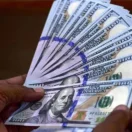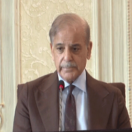By Zafar Masud | Sayem Ali
Published in Dawn on August 09, 2024
The World Bank’s International Debt Report 2023 highlights that surging interest rates and external shocks have intensified debt vulnerabilities in all developing countries.
In the past three years alone, there have been sovereign defaults in 10 developing countries — greater than the number recorded in all of the previous two decades. The report warns that about 60 per cent of low-income countries are at high risk of debt distress or already experiencing it.
In a recent WTO panel discussion in Geneva on ‘Mainstreaming trade: the way out of debt crises for developing countries’, it was argued that trade competitiveness and productivity are prerequisites for better debt management.
While the reduction of debt through trade (and FDI) is a long-drawn process, it’s the only sustainable path to growth and poverty reduction.
According to the World Bank, a one per cent increase in FDI as a share of GDP leads to a 0.38pc increase in economic growth. South Korea is an example of how implementation of trade liberalisation and comprehensive industrial policies has led to a war-ravaged state in the 1960s graduating to a high-income country in the 2000s.
The starting point in achieving trade competitiveness is striking a balance between promoting exports (export bias) and protecting domestic interests (import substitution). The success of the Asean economies and China in moving from protectionism to trade liberalisation has led to a significant increase in incomes and a reduction in poverty over the last three decades.
Pakistan has experimented with trade liberalisation; however, there has been a complete shift back to protectionism since 2008, with a rise in customs duty and additional taxes (regulatory duties).
The tariffs collected at the import stage constitute around 48pc of Pakistan’s total tax in 2022. Pakistan’s weighted average mean tariff of 12.7pc is the highest amongst the top 70 exporting countries in the world. In comparison, the weighted average tariff of the top 70 exporting nations is 2.7pc.
The South Asian average is 5.9pc, the Asean average is 2.5pc, China is 3.8pc and India 5.8pc. Pakistan has the second highest effective protection for domestic producers of final consumption goods in the world, as intermediate inputs and raw materials typically have much lower tariffs than consumer goods.
The starting point in achieving trade competitiveness is striking a balance between promoting exports and protecting domestic interests.
As a result, Pakistan has been unable to develop a strong export base and has fallen behind regional economies in terms of per capita growth. Even today, more than 50pc of its exports rely on only four markets — the US, EU, China and Afghanistan.
The country has been losing competitiveness in international markets and finds it harder to sell its exports within its traditional markets. About 70pc of Pakistan’s exports continue to be low-tech; the country is unable to diversify its commodities and markets, with textiles and clothing (about 5pc to world trade) accounting for around 58pc of our total exports.
Pakistan’s loss of competitiveness is evident from the fact that its export-to-GDP ratio was only 8.4pc in 2023, whereas in India it was 19pc and in Bangladesh 15pc. A recent World Bank report highlights that between 1991-2021, labour productivity in Pakistan lagged behind other countries, rising only from about $3,200 to $4,700, a multiple of 0.5, compared to Vietnam, where it shot up from $1,200 to $6,000, a multiple of five.
The country has also tried selected liberalisation through free trade agreements with selected countries. However, this has not led to any incremental increase in exports, and, in fact, has led to the widening of the trade deficit.
Pakistan has distorted trade relations with its neighbours. The World Bank suggests that a 10pc reduction in trade barriers within South Asia could lead to a 31pc increase in regional trade.
A study by the Stockholm International Peace Research Institute suggests that a 1pc increase in trade openness leads to a 0.8pc decrease in the risk of interstate armed conflict. The World Bank estimates that Pakistan’s exports could increase by a staggering 80pc, or about $25 billion, if trade with India reached its full potential.
According to the State Bank, about 45pc of Pakistan’s imports could be imported from India at a lower cost than the rest of the world, with average savings estimated between 0.3pc to 0.7pc of GDP per annum, whereas, about 70pc of the items exported from Pakistan have unit values less or equal to the Indian imports’ unit values, indicating a scope to enhance exports to 1.9pc of GDP.
While we strongly advocate the removal of trade barriers, any policy changes must be done gradually to allow domestic firms time to position themselves to benefit from the reduction in trade barriers.
Apart from tariff rationalisation, there’s also a need to build trade infrastructure and improve trade facilitation. The World Bank estimates that a 1pc reduction in the cost of trade leads to a 0.7pc increase in trade volumes.
We also need to revamp the fiscal and monetary incentives to exporters, introducing targeted and time-bound incentives that are linked to performance. The access to these incentives should not be limited to only traditional export industries.
These reforms have become critical to enhancing exports, attracting long-term foreign investment, and getting Pakistan out of debt distress. Vietnam launched the Doi Moi reforms in 1986, moving away from a ‘centralised planned economy’ to a global manufacturing and export hub, sustaining a growth rate of 7pc over the last three decades. Poverty rates fell from 40pc in the 1980s to less than 5pc in 2022.
Pakistan needs a new, home-grown economic plan. The current structure of the economy distorts the allocation of resources, stifling productivity growth. The new growth plan must focus on integrating Pakistan with the global economy by removing the anti-export bias and protectionist policies.
There is an urgent need for corrective actions to improve the investment climate, which will boost private and foreign investments in the economy.





